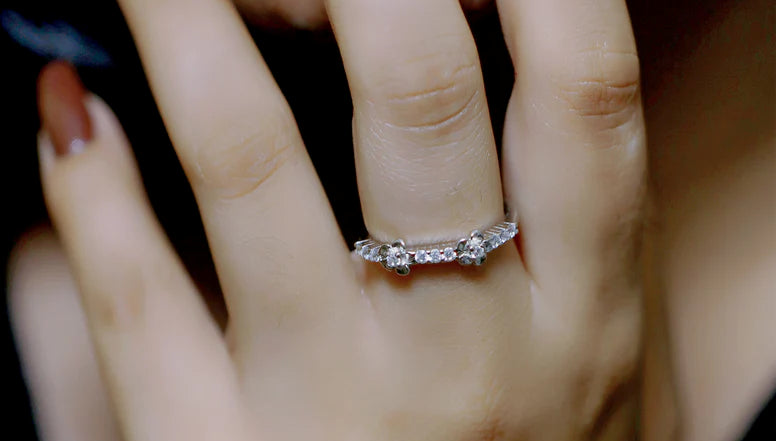Silver vs Sterling Silver
Posted by ZARKAN JEWELLERY

When it comes to choosing jewellery or decorative items made of silver, you may have come across terms like "sterling silver" and "silver" and wondered what the difference is. While both contain silver, there are some significant differences between the two.
Durability
Silver, in its purest form, is a soft and malleable metal that is not very durable. It is not suitable for making jewellery or other decorative items as it will quickly bend or scratch. As a result, pure silver is often alloyed with other metals to enhance its strength and durability. This alloying process results in the creation of sterling silver.
Sterling silver is a mixture of 92.5% pure silver and 7.5% other metals, typically copper. The copper in the alloy provides additional strength and durability, making sterling silver more resistant to damage and wear. This makes it a popular choice for jewellery and other decorative items.
Purity
One of the key differences between sterling silver and silver is their purity. Sterling silver contains a smaller percentage of pure silver than silver, which is 99.9% pure. While silver is purer, it is also softer, making it less durable than sterling silver. As a result, it is not ideal for use in jewellery and other decorative items.
Appearance
Another difference between the two is their appearance. Sterling silver has a bright and shiny finish that does not tarnish easily, while silver has a more muted, matte finish. Silver tarnishes quickly when exposed to air, which can be a disadvantage when it comes to jewellery and decorative items.
Cost
In terms of cost, sterling silver is generally less expensive than silver. This is because it contains a smaller percentage of pure silver and is easier to work with, making it more readily available and less expensive to produce.
Maintenance
When it comes to caring for sterling silver and silver, there are some differences to keep in mind. Sterling silver can be cleaned with a soft cloth and a mild soap and water solution, while silver requires more specialised cleaning methods. Silver polishing cloths and solutions can be used to remove tarnish from silver, but care must be taken not to damage the metal.
Conclusion
In conclusion, while both sterling silver and silver contain silver, there are significant differences between the two. Sterling silver is stronger, more durable, less expensive, and easier to care for than silver. It is the preferred choice for jewellery and decorative items due to its superior durability and appearance. However, if you are looking for a purer form of silver, then silver is the better choice. Ultimately, the choice between sterling silver and silver depends on your personal preference and the intended use of the item in question.

